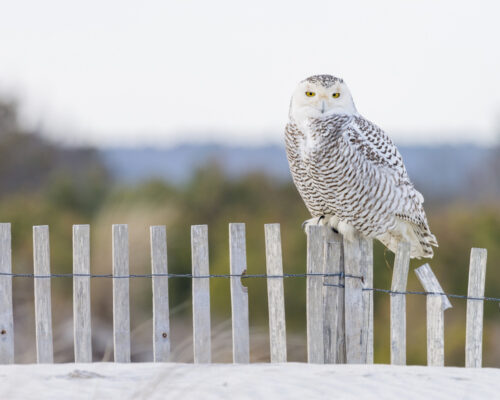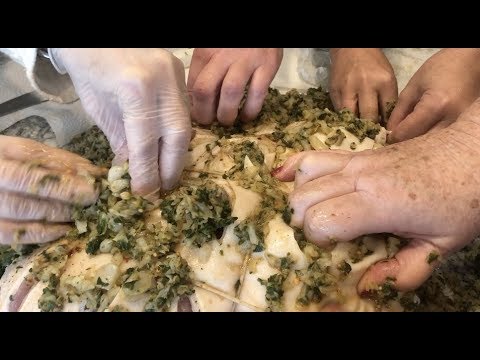The Bloede Dam Removal and the Chesapeake’s Forgotten First Fishery
Dr. Matt Ogburn is searching for ghosts. Not the see-through spectral kind, festooned in chains like Jacob Marley. These are genetic ghosts. They apparate in native species of fish, showing themselves in behaviors passed down through the generations and, in some cases, the centuries.
The Patapsco River, in particular, has recently become a haunt for this kind of waterborne ghost-spotting. Dammed first in 1761, and then multiple times over after that, the fish in this river should have forgotten long ago that the headwaters of this river spawned their great-great-great-great-fishly progenitors. But Ogburn, a senior scientist with the Smithsonian Environmental Research Center, thinks it might be possible that modern shad can remember. Or at least, he’s interested to see if they can.
“It’s a question I really want to answer. Will shad from a genetic stock go back up the river to spawn? Will it occasionally happen? There might be fish out there that will start coming back, and over time, you could build up a more migratory portion of the population.”
Ogburn and his SERC team of researchers are studying the population of river herring and shad on the Patapsco, and they’re especially interested to see if these ghosts of memory (or something more pragmatic, like lower river population density) might motivate these native species to return to spawning grounds blocked for a century or more. In 2018, Patapsco River’s Bloede Dam was demolished as part of a $17M environmental restoration initiative. With the obstructing dam removed, the free-flowing stretch of the river is now Ogburn’s laboratory. Using what’s known as “environmental DNA” (that’s fish scales and detritus floating in the water to you and me), Ogburn has discovered that yes, there have been a few shad passing upstream. Less than 20 last year, but it’s a start. If the fish return, it will mark a homecoming for a species long barricaded from its natal river. Maybe more importantly, it will prove that it is possible for the Chesapeake to heal when given the chance.
The Patapsco River and the process to gradually undam its flow is an important environmental story because of the shad, alewives, and river herring that the river’s restoration will attract. But it’s part of a great Chesapeake cultural story too. For centuries, the springtime chapter of our seasonal culinary cycle was dominated by shad.
Shad was the ultimate flavor of spring, a taste of life returning after a long, cold winter. Fatty and restorative, its flesh and roe were a harbinger of the year’s harvest and plenty to come. Beginning with the Native Americans and continuing through the 20th century, Chesapeake people netted shad in incredible amounts and found all sorts of ways to prepare and preserve it. We named the shadbush trees that bloomed in the spawning fish season after them, and watched the branches eagerly for blossoms indicating that the spring run had started. We associated shad and shad feasts with politicking season; we named riverside towns after the fish; and in the 20th century, we dropped mentions of shad roe into popular theater tunes. An article from the Baltimore American in 1907 conveys the vital role shad played in the town’s springtime economy and culture. “In the early history of this town, shad fishing was the principal industry. In fact, for many years, it was a special cash income to the laboring people, who sacrificed everything like work for the spring fishing for shad.”
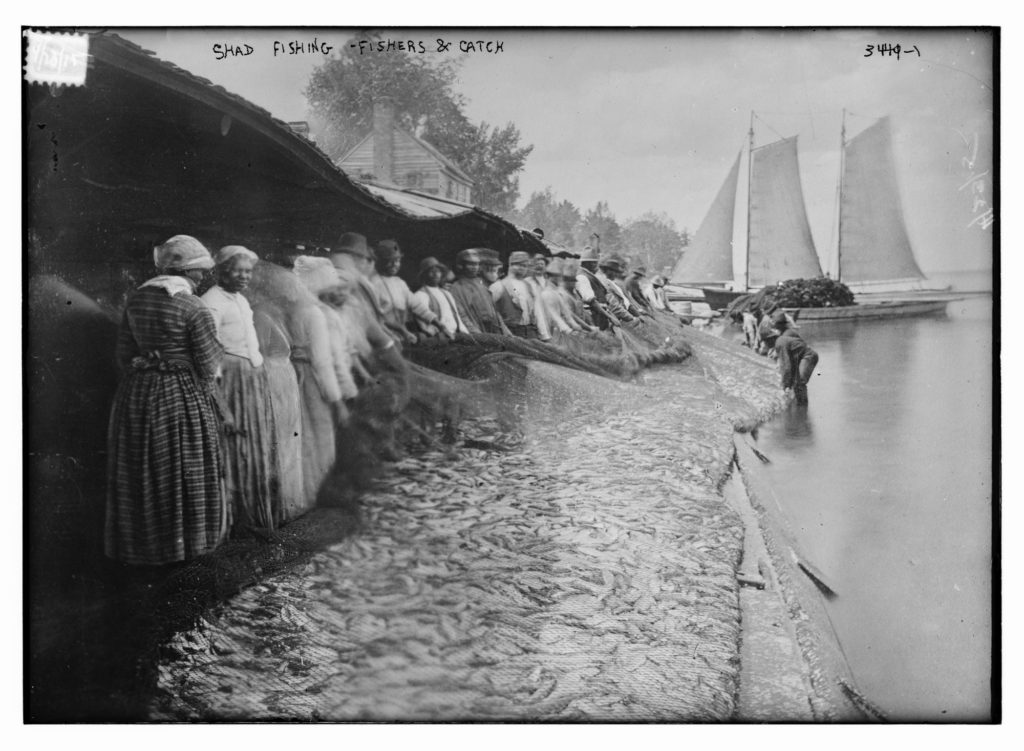
But the story of shad stopped short in the 20th century. Along with it went all of the Chesapeake’s associated traditions and tastes. As dams were built, shad stopped arriving in our waterways and on our plates. And for the last part of the century, though the remaining few were protected by a moratorium, it seemed shad were pretty much gone for good.
To understand the shad story, you have to start long ago when the Chesapeake’s waterways were wide open, flowing tributaries. American shad, Alosa sapidissima, are anadromous. This means they spawn in the headwaters of the Chesapeake’s rivers where they were born, and return to the ocean as small fry where they grow and mature. Once ready to reproduce, they begin the journey back to their natal waters and arrive in springtime to repeat the process.
All up and down the East Coast, shad followed the same cycle, joined by other species that share their wandering ways: alewife, hickory shad, blueback herring. Together, millions of fish in one raging, silvery torrent flooded from the sea to the spawning grounds of their birth every April, forming a vital link in the food chain for all sorts of other species—including humans.
The Chesapeake’s native populations built funnel-shaped weirs from stone to catch and trap shad; some of the weirs still remain on the bottom of the Susquehanna and Rappahannock in ghostly, submerged vees. In open water, they also constructed forebears of the modern-day pound net. And to fully harness the potential of the shad run, they also night-fished for them, using small fires in their clay-lined dugout canoes to attract and catch huge schools. Smoked slowly over the heat from slow-burning fires, the catch sustained tribal communities throughout the year.
After colonization, shad formed the backbone of the Chesapeake’s first commercial fishing industry. Shad were easily filleted and packed in barrels of salt for long-term preservation and shipping, sustaining enslaved workers at Dominican sugar cane plantations and members of the Continental army alike. At riverfront estates like George Washington’s Mount Vernon on the Potomac, enslaved men and women used Native American night fishing techniques to attract and harvest shad, landing their catch in enormous, bulging nets.
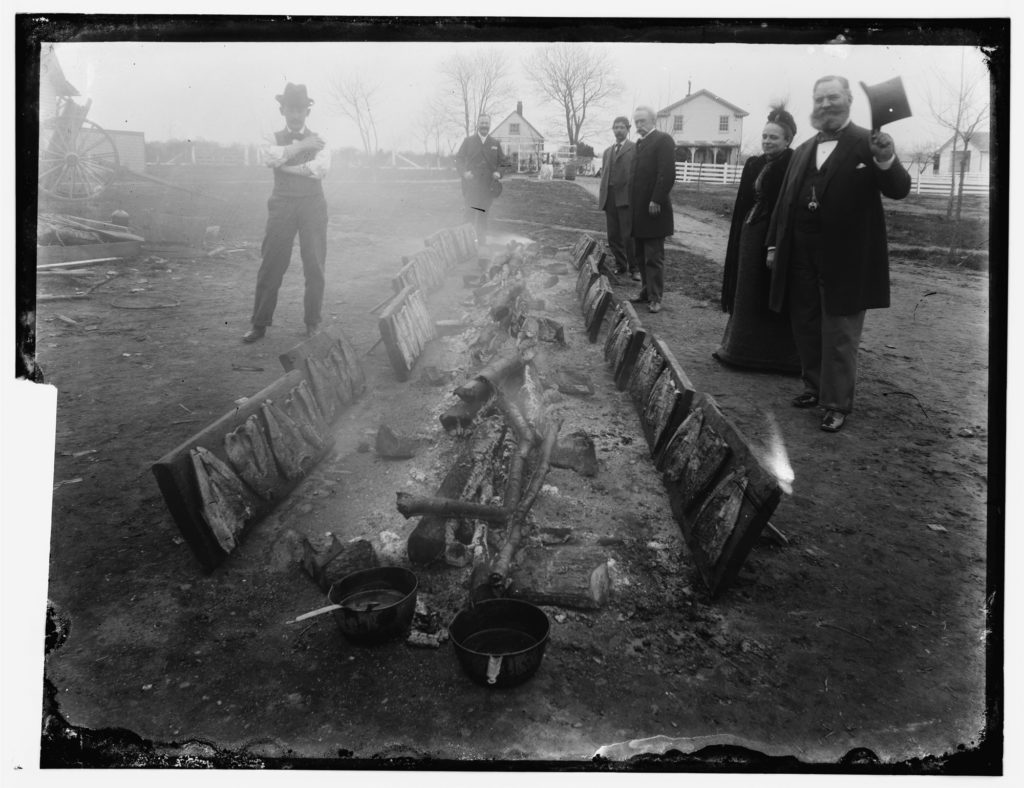
Some fish would be reserved for feasting, and here native traditions persisted as well, as butterflied, descaled shad were pinned to planks near coaled fires to cook. The oily, bony fish would cook slowly in the radiant heat, absorbing the woodsmoke and rendering into a silken, buttery treat that melted in your mouth. Later, this tradition would be absorbed into the political cycle, especially along Virginia’s James River, where shad plankings became synonymous with springtime politicking. Elsewhere, shad plankings were just community festivals, locals stuffing themselves with smoky shad and roe to celebrate the influx of delicious food after a long scarce winter.
But the watershed’s watershed moment for shad began as the Chesapeake’s growing population turned to water for power in the 18th century. First, as tobacco plantations transitioned to wheat, waterways were dammed for grist mills and flour production—which led in turn to a series of bloody conflicts on major Bay tributaries such as the Susquehanna. Especially from landowners upstream of the mill dams, which were effectively barred from their expected spring influx of shad, the obstructed waterways sparked acts of violence and in some cases murder. Known as the “Shad Wars,” they were just the first chapter in the battle between those who want to harness the power of water and those who want access to the natural resources they restrict.
The Industrial Revolution of the 19th and early 20th century upped the ante with Chesapeake dam building, and the Patapsco River was just one case study. Dams for sawmills, cotton mills, woolen mills, water reservoirs, and early hydroelectric power proliferated below the river’s fall line. By 1933, engineers for the Office of Water Supply for Baltimore City mapped 28 licensed dams on the Patapsco—some in operation, some in ruin. Some of the Chesapeake’s biggest tributaries were dammed in even greater numbers. Today, just the lower Susquehanna River alone has ten, including the massive Conowingo Dam.
As the waterways essential to their life cycle were cut off, consumer demand for the fish, especially the roe, grew. Shad were harvested in even greater numbers. Fishing nets got bigger and more numerous as shad numbers began to dwindle throughout the Chesapeake. The Patapsco River’s shad population in particular was dismal. As early as 1876, in a Commissioners of Fisheries report, authors P. R. Uhler and Otto Lugger sounded the alarm:
“The American Shad…the most savory of all fishes, was formerly common in all the rivers emptying into the Chesapeake Bay on the Western Shore, and in the principal ones of the Eastern Shore. The principal fisheries are now in the Susquehanna, Potomac, and Chester rivers, although smaller numbers are taken in the Patuxent and Severn. It has been almost cleared out of the Patapsco River, although a few stragglers venture to get beyond tide during almost every spring.”
By 1939, the Maryland Conservation Department (later the Maryland Department of Natural Resources) stated that, “The Bay is literally strewn with fishing gears, most of which are set to catch fish all day and all night, throughout the season, thus not giving [shad] access to the breeding grounds.”
To support the Chesapeake fishery, restoration efforts like shad hatcheries began in the 20th century, but it was too little, too late. Influxes of hatchery-produced shad couldn’t make their way up rivers dammed multiple times, even with fish ladders and other attempts at environmentally friendly retrofits. The fishery plunged, declining from 17.5 million pounds at the turn of the century to less than two million pounds by the 1970s. Maryland closed its shad fishery in 1980, and Virginia followed suit in 1994, and our collective memory of shad, the taste of spring, started to die.
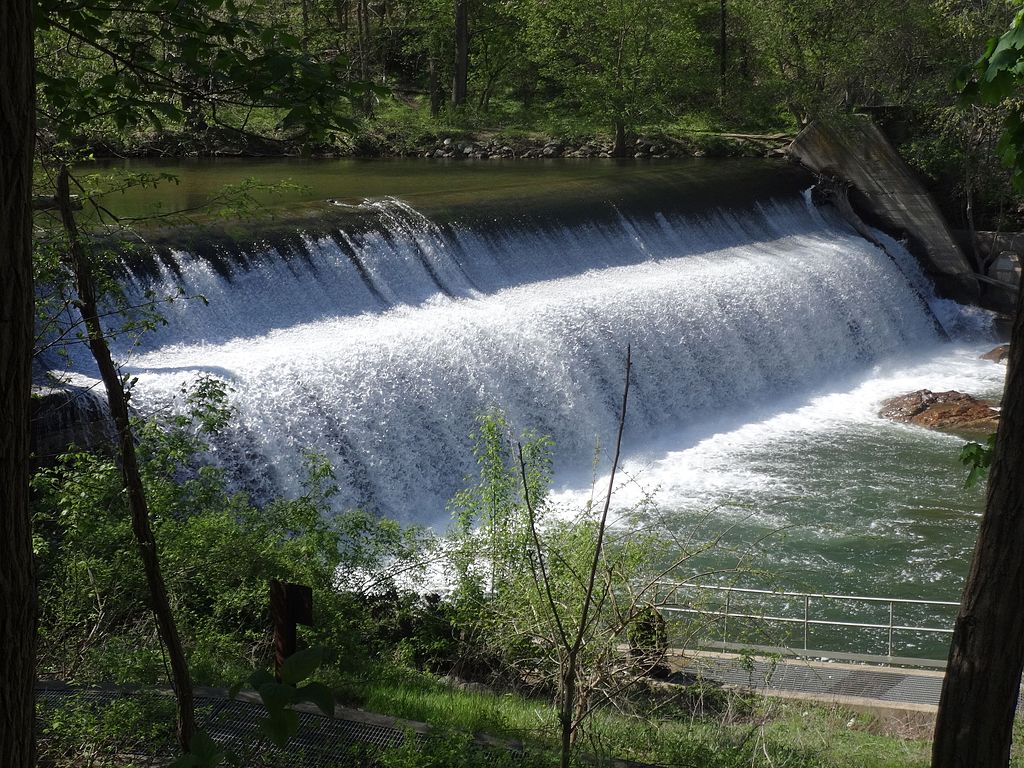
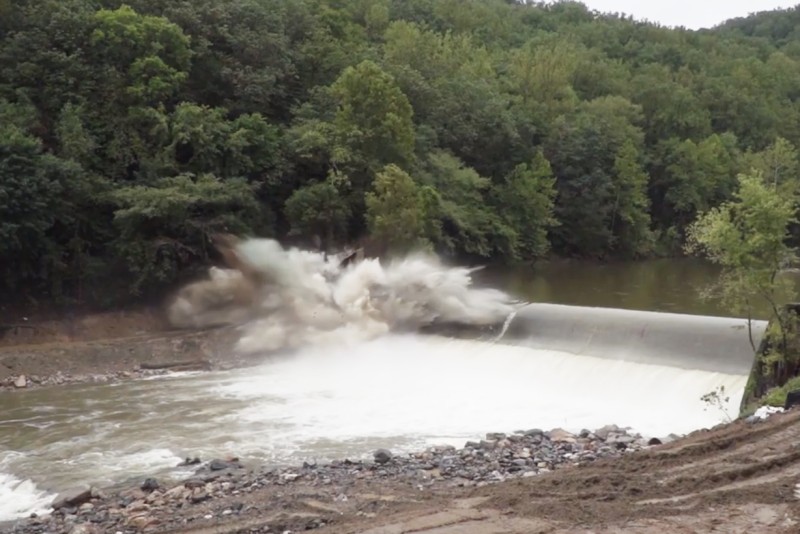
Which brings us to the demolition to the Bloede Dam on September 6, 2018. The Bloede Dam removal marks a huge shift in our environmental consciousness. The Patapsco stopped being a valuable source of power for mills in the early 20th century, and at some point in the following century, the river itself—its habitat, its beauty, its peaceful banks providing a natural oasis so close to the city of Baltimore—became valued more than its ability to turn a profit.
Serena McClain sees this kind of shift in thinking a lot in her role as director of River Restoration for American Rivers, a major partner in the Patapsco restoration. “The Bloede Dam removal project reflects a reconsideration of the environment, its value and its role. Science and technology has advanced so much, and now we have the opportunity to view the effects, observe and learn. It points to a rethinking of what we consider critical infrastructure.”
Across the country, a thousand dams have already been removed as part of a national undamming movement. Focused on restoring the flow of long-dammed rivers and bringing back lost ecosystems, the push to free restricted rivers has resulted in all sorts of species making a comeback. In short, it works. Now we get to see if the Patapsco—and the shad and herring that once teemed in its waters, a bygone chapter in the Chesapeake story—will return.
As part of the Patapsco’s restoration, two other dams—Union and Simkins—were removed first. But Bloede marked the biggest, most ambitious and costliest removal, and one that aimed to open up the greatest stretch of river to spawning fish and the ecosystem they relied upon. For American Rivers and Maryland DNR, which owned and operated the dam, the multi-million dollar price tag was a worthwhile investment that would reconnect historic habitat, reestablish native aquatic populations, and improve water quality. “The removal of Bloede shows we can do hard things,” McClain said. “To have the river be rebirthed back to what it once was. We can’t turn the clock back to pre-industrial times, but you can remove a dam and allow a river to be a river.”
It’s been a few years, and it will take more time to see how much the river can heal, but parts of the Patapsco started to reset almost immediately. The huge sediment load trapped behind the dam, for example, began to wash away immediately after the dam was blown up, scouring away to reveal the rock and gravel bottom of the natural riverbed beneath. Paddlers can now traverse downriver long stretches of the Patapsco, which only has one dam left.
But it remains to be seen what will come back up the river, now that the flow is clear. What ghosts of behavioral memory might awaken in the remaining shad and herring in the Chesapeake, and if they come, can one element of the Chesapeake’s seasonal cycle be restored with their springtime run? The state of Maryland is betting so. In 2019 alone, the Maryland DNR stocked 335,000 American shad and 1,480,000 hickory shad in the Patapsco River.
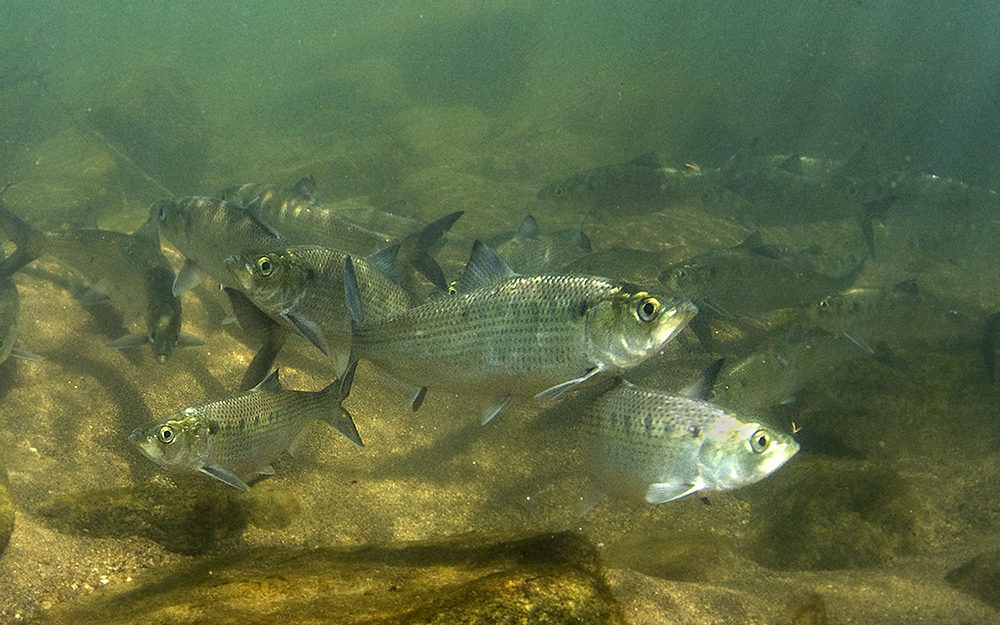
Now Dr. Obgurn and his team are awaiting this year’s spring run to see if any of those fish, or maybe some ancestors of the fish that spawned here 100 years ago, will return. They’re using all sorts of methods to check: sonar devices; microchip “pit” tags that work like a fish EZ pass and count every fish swimming past the old dam location to head upstream; and of course, environmental DNA. Last year’s numbers were low—just 11 American shad and 40 to 45 hickory shad were counted below the dam—but like the waters of the Patapsco, hope springs eternal.
Dr. Ogburn is optimistic. “There’s still so much to learn about the species. It’s not like we know everything and there’s no hope. Our research has shown that alewife and river herring started using stretch of the river above the Bloede Dam site, all the way up to Daniels Dam. And we just got funding to investigate river herring and American shad, with what will be brand-new tools.”
It may take as long as the dam was in place for the shad and herring to find their way upstream again, but now that the river is free, scientists have time to wait and see. If some of the other rivers like the Potomac and Rappahannock are any indication, dam removal can bring back shad. And as for the rest of us, perhaps we’ll rekindle our love of shad as populations grow in the wake of the Chesapeake’s undamming. Like the people before us who called this watershed home and awaited the shad’s return each spring, we’ll wait patiently. Scientists, anglers, and hungry roe connoisseurs alike, watching the blooms on the shadbush emerge, eventually we’ll return to the river on that first warm day.


